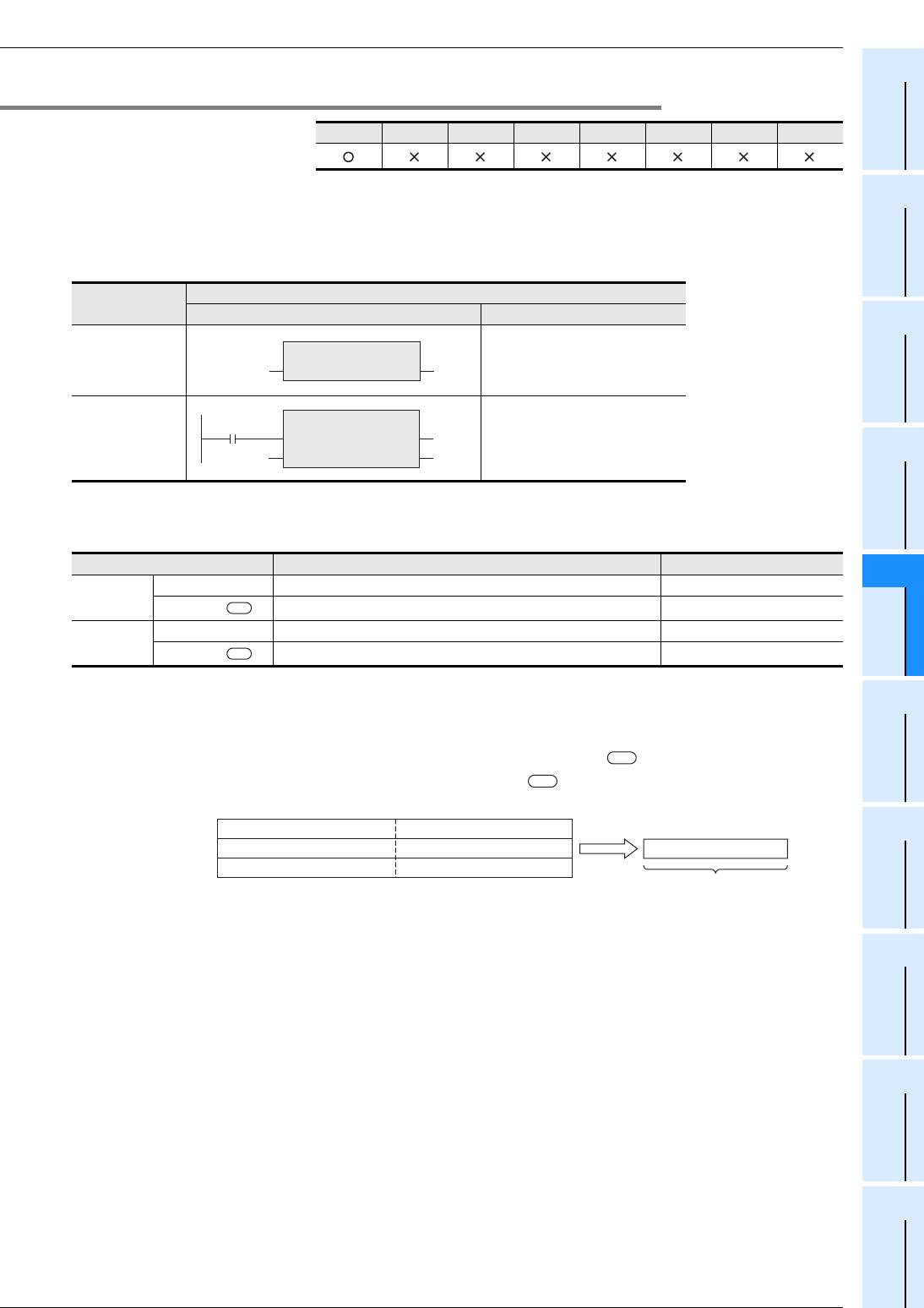
5 Applied Functions
5.1 Type Conversion Functions
109
FXCPU Structured Programming Manual
(Application Functions)
1
Outline
2
Function List
3
Function
Construction
4
How to Read
Explanation of
Functions
5
Applied
Functions
6
Standard
Function Blocks
A
Correspondence
between Devices
and Addresses
5.1.37 STR_TO_INT(_E)
Outline
This function converts string data into word [signed] data, and outputs the data obtained by conversion.
1. Format
*1. Output variable
2. Set data
In explanation of functions, I/O variables inside ( ) are described.
Explanation of function and operation
This function converts string data (3 words) stored in a device specified in into word [signed] data, and
outputs the data obtained by conversion to a device specified in .
Cautions
1) Use the function having "_E" in its name to connect a bus.
2) When handling string data in structured programs, you cannot specify 16-bit devices directly, different
from simple projects. Use labels when handling string data.
Use global labels when specifying labels.
FX3U(C) FX3G FX2N(C) FX1N(C) FX1S
FX
U
/FX
2C
FX0N FX0(S)
Function name
Expression in each language
Structured ladder ST
STR_TO_INT
STR_TO_INT(_STRING);
Example:
D10:=
STR_TO_INT(Label);
STR_TO_INT_E
STR_TO_INT_E(EN,_STRING,
Output label);
Example:
STR_TO_INT_E(X000, Label,
D10);
Variable Description Data type
Input
variable
EN Execution condition Bit
_STRING ( )
Conversion source string data String
Output
variable
ENO Execution status Bit
*1 ( )
Word [signed] data after conversion Word [signed]
STR_TO_INT
_STRING *1
Label D10
STR_TO_INT_E
EN ENO
*1
D10
X000
Label
_STRING
s
d
s
d
ASCII code for ten-thousands place
High-order byte
ASCII code for hundreds place
ASCII code for thousands place
ASCII code for tens place
ASCII code for ones place
Sign data
Low-order byte
String
1st word
2nd word
3rd word
Word [signed] data


















